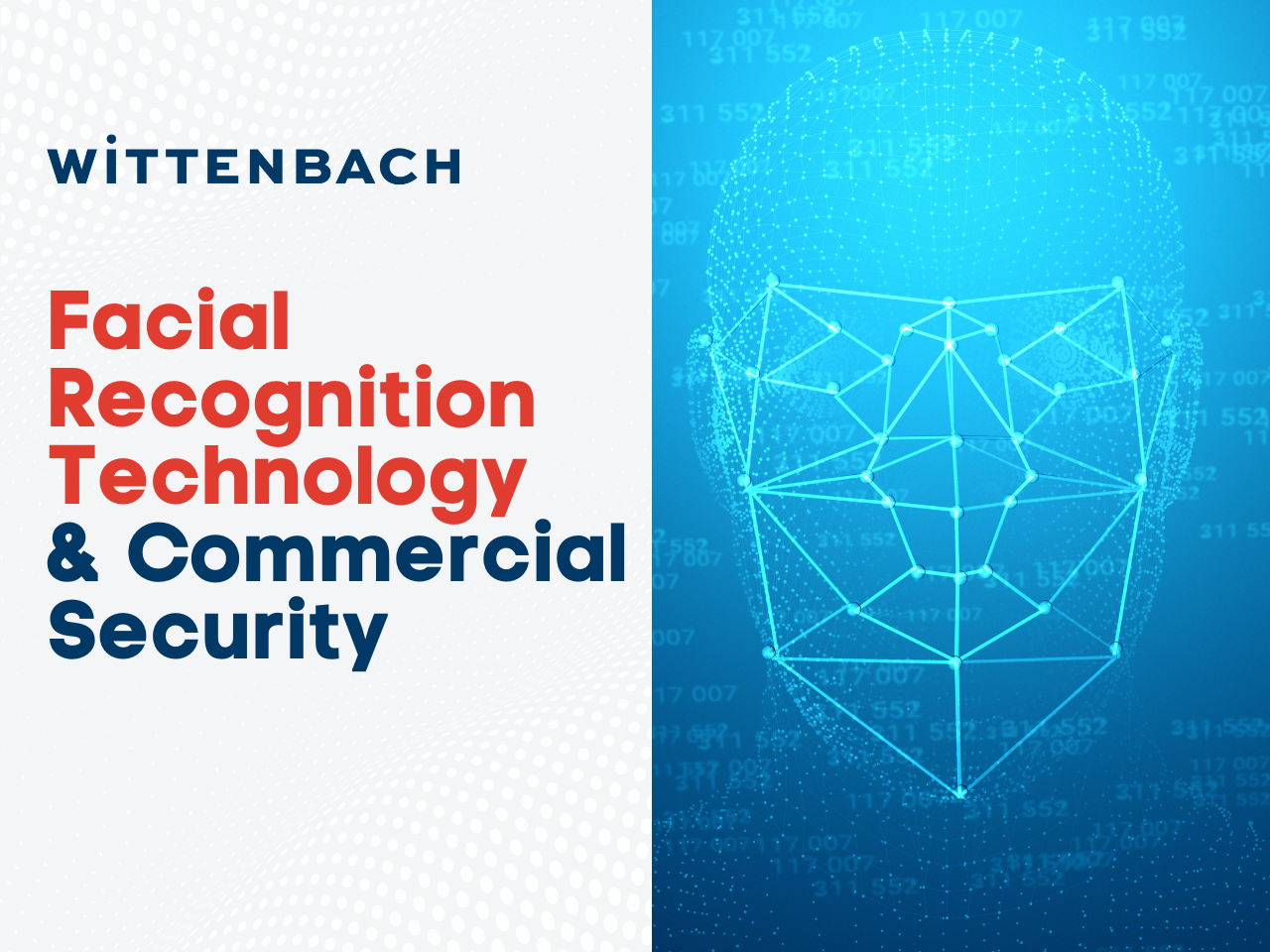In recent years, facial recognition technology has rapidly evolved. This highly sophisticated software has greatly enhanced the capabilities available within the commercial security industry. Here at Wittenbach, our goal is to support your financial institution, empowering you and your business by providing only the best-in-class security solutions. To help address your questions and concerns regarding facial recognition technology, we will explain exactly how it works, best industry practices, and the state-of-the-art products our partners at Verint software and hardware offer to help keep your branch safe.
According to Thales, “Facial recognition is the process of identifying or verifying the identity of a person using their face.” A common example of this technology applied in everyday life is the Face ID software used to unlock your iPhone or laptop. Facial recognition can accurately identify a given user as it “captures, analyzes, and compares patterns based on the person’s facial details.”
For verification and identification security purposes, face detection and matching processes are quick and efficient. In practice, “Facial biometrics continues to be the preferred biometric benchmark,” within the electronic security space, said Thales. Being that it is easy to “deploy and implement,” there is no physical interaction required of the end-user.
With this in mind, it’s no surprise that Markets and Markets Research Private Ltd. recently reported, “…by 2024, the global facial recognition market would generate $7 billion of revenue, supported by a compound annual growth rate (CAGR) of 16% over 2019-2024.”
How does facial recognition technology work?
As explained by Thales, there are 3 key components in the facial recognition software process…
- Detection: “The face detection process is an essential step in detecting and locating human faces in images and videos.”
- Analysis: “The face capture process transforms analog information (a face) into a set of digital information (data or vectors) based on the person’s facial features.”
- Verification: “The face match process verifies if two faces belong to the same person.”
In summary, facial recognition technology detects a face, fully analyzes it, and distills that information in data points the software’s face matching process can use to verify a match.
This process allows for facial recognition technologies to be applied for both customer verification and criminal identification security purposes. On the customer side, it provides an added layer of authentication, confirming exactly who is attempting to access a given account, and further ensuring the protection of the valuable information and assets within that user’s account. From the perspective of a commercial site/business, cameras with facial recognition have proven extremely effective in deterring, detecting, and identifying would-be criminals when paired with the proper video surveillance systems.
How does facial recognition technology apply in commercial security?
There are multiple components to any facial recognition system. In a recent Wittenbach blog post, we took a deep dive into these components, especially the industry-leading products offered by our expert partners at Verint, and how we at Wittenbach properly install these cameras with facial recognition capabilities to help keep your branch safe and secure.
The first step in any security system utilizing facial recognition is the software. As mentioned in our recent blog post, Verint’s FaceDetect video analysis solution “addresses 12 of the most common limiting factors in facial recognition.” These especially include…
- Active avoidance: It is very common for a potential intruder to wear a disguise, change their style, or modify their facial features in order to conceal their identity and avoid recognition. However, FaceDetect’s powerful algorithm is able to successfully address these techniques, providing one of the “highest true positive rates and lowest false positive rates” available in the industry today.
- Natural changes: FaceDetect software is also ethnicity independent. This means that the software “does not account for skin tone when scanning faces,” and can “process aging differences, whether organic or artificially created, up to 20 years.”
- Situational: The most influential factors on the success of facial recognition technology are environmental and circumstantial. Be it “low light, indoor or outdoor recognition, and angled or partial views of a face,” FaceDetect™ can accurately account for and adapt to these changes. In addition to these environmental changes, this software can also recognize someone within a large crowd of hundreds of other people, even if they are only in frame for less than a second. FaceDetect™ can “also integrate with mobile or wearable camera input, and works seamlessly with ‘pan-tilt-zoom’ or ‘PTZ’ IP cameras.”
The second step in the application process is the hardware components. While FaceDetect™ software can be integrated with any IP camera system, it is important to note that it works most efficiently within Verint’s own hardware.
For this reason, we at Wittenbach professionally recommend Verint’s suite of products as they work best with their facial recognition capabilities. Their IP camera systems record and transmit footage via Ethernet connected to Network Video Recorders (NVRs). These NVRs are where the collected footage is then stored and viewable, both on and offline. These systems maintain NDAA compliance across all their available products, ensuring the U.S. government has approved the security of these camera models.
The Verint EdgeVR 300 NVR system is an especially good fit for this reason. This system can be centrally managed through Verint’s user-friendly EdgeVMS Op-Center and Video Investigator. These features allow for enterprise-wide NVR administration and viewing. While our services at Wittenbach do not include the installation of FaceDetect software specifically, we do offer these products which can be easily integrated with such software and any subsequent hardware maintenance.
What are the best practices when implementing these systems of facial recognition?
When implementing security systems leveraging facial recognition software, CSIS establishes the best practices or “guardrails” to uphold which includes…
- Consent and Authorization: “Some FRT uses will require the consent of the subject. This could be implied consent, as when you enter a store that is transparent about FRT use. Other uses may require a warrant or other court approval for use… At an individual level, ensuring that there are appropriate mechanisms to opt in or opt out of FRT use without penalty provide for consent.”
- Data Retention: “One source of concern is that images collected for one purpose are then used for another without consent or transparency. There must be clear rules against this that define when images can be stored, for how long, and under what conditions any stored image can be used.”
- Algorithmic Review: “Like any new technology, improvements in FRT are iterative. Between 2017 and 2021, error rates fell dramatically. This reflects improvement in the algorithms. Requiring agencies to frequently ‘refresh’ the FRT they use to take advantage of new or improved algorithms is essential to further reducing error.”
Wittenbach’s trained experts are well-equipped to discuss these options further with you to better address your financial institution’s electronic security needs. The Verint FaceDetect™ facial recognition technology, especially when paired with its Verint EdgeVR 300 NVR system, can optimize your branch security and support its digital transformation process.





